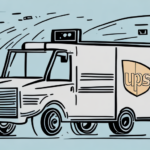How to Correct Early Undeliverable Returns and Reduce UPS Shipping Charges
Undeliverable returns can be a frustrating experience for both the shipper and receiver. Moreover, they result in higher shipping costs for businesses. The reasons behind undeliverable returns range from incorrect address information to damaged packages. Reduced delivery accuracy can lead to larger fees from shipping carriers such as UPS. It’s essential for businesses to analyze their shipping data to identify the most common causes of undeliverable returns and high shipping costs. Armed with this information, businesses can implement cost-effective solutions to minimize the risk of undeliverable returns and reduce their overall shipping expenses.
Understanding the Causes of Undeliverable Returns and High Shipping Charges
Undeliverable returns occur when a package cannot be delivered to the intended recipient. Analyzing the data behind returned packages is crucial to understanding the causes. The most common reasons include:
- Incorrect or incomplete address information
- Damaged packages
- Recipient refusal to accept the package
- Weather events
- Customs clearance issues
- Import/export regulations
When an undeliverable return happens, shippers often incur additional fees, including costs for package returns and reshipments. Shipping carriers like UPS also impose extra charges to cover the cost of processing these returns and reshipments. According to the UPS Financial Services, these fees can be significant, especially for businesses with high volumes of undeliverable returns.
Implementing address verification software can significantly reduce the number of undeliverable returns by identifying and correcting address errors before shipping. Additionally, providing clear and detailed delivery instructions can help ensure successful deliveries. For businesses facing high volumes of returns, partnering with a third-party logistics (3PL) provider may be beneficial in managing the shipping process and minimizing return risks.
Analyzing Your Shipping Data: Key Metrics to Track for Cost Reduction
Analyzing shipping data is essential for identifying areas where costs can be reduced. Shippers should monitor the following key metrics to assess their shipping performance:
- Undeliverable returns by cause
- Shipping costs by carrier and service level
- Delivery performance by destination and carrier
- Package dimensions by weight and size
- Percentage of on-time deliveries
Utilizing data reporting tools, such as those offered by shipping software, allows businesses to track and analyze these metrics regularly. Implementing quality improvement programs based on this analysis can address highlighted issues effectively.
Tracking the percentage of on-time deliveries is particularly important. This metric indicates the reliability of your shipping process and can highlight carriers or destinations that consistently experience delays. Improving this metric not only reduces the risk of undeliverable returns but also enhances customer satisfaction and loyalty.
Tips for Addressing Common Shipping Problems: Correcting Address Errors and Invalid Addresses
Incorrect or incomplete address information is a leading cause of undeliverable returns. To mitigate this, ensure accurate address collection at the point of order. Integrating shipping software that auto-corrects and completes address information in real-time can significantly reduce errors. Additionally, leveraging an address verification tool to validate all shipping addresses before fulfillment is highly recommended.
In cases where a package is returned due to incorrect address details, re-shipping with the corrected information is necessary, though it incurs additional shipping fees. Preventing these errors through accurate address collection is more cost-effective.
Invalid addresses, which do not exist or are unrecognized by postal services, can also cause shipping problems. To avoid this, double-check customer-provided address information and use verification tools to ensure accuracy. Furthermore, be aware of specific shipping restrictions or requirements for certain destinations, as non-compliance can result in returns or confiscation of packages.
Improving Packaging Practices: Avoiding Damaged or Lost Packages
Damaged packages are another common cause of undeliverable returns. To prevent this, evaluate and improve your packaging practices by:
- Using high-quality packaging materials
- Ensuring proper padding and secure taping
- Applying appropriate labeling, such as fragile labels and orientation stickers
For lost packages, thorough investigation is necessary to determine where the package was lost and if it can be recovered. Enhanced tracking measures, including GPS tracking, can help locate misplaced or lost packages effectively.
Additionally, consider the size and weight of packages to ensure they are manageable for carriers. Oversized or heavy packages can lead to damage or delays. For international shipments, additional packaging and labeling may be required to comply with customs regulations.
Adopting eco-friendly packaging materials, such as biodegradable or recyclable options, can reduce environmental impact and appeal to environmentally conscious consumers. Sustainable packaging practices not only help the planet but can also enhance your brand's reputation.
Streamlining Your Shipping Workflow: Reducing Transit Time and Expedited Services
Longer transit times increase the likelihood of undeliverable returns. To reduce transit time, optimize your shipping workflow by:
- Identifying and eliminating inefficient processes, such as manual data entry
- Automating shipping processes with shipping software
Expedited services can offer faster delivery times, thereby reducing the risk of undeliverable returns. However, these services can be costly. Negotiating shipping rates with carriers like UPS can help offset the costs of expedited delivery services.
Choosing the right carrier based on their delivery network and transit times can also enhance efficiency. For instance, using a regional carrier closer to the delivery destination may be more cost-effective and faster than a national carrier. Carriers such as FedEx and UPS offer guaranteed delivery times for certain services, providing reliability and reducing the risk of undeliverable returns.
Utilizing Technology Solutions: Enhancing Tracking and Delivery Accuracy
Implementing advanced tracking and delivery accuracy solutions can minimize the risk of undeliverable returns. Consider the following technology solutions:
- Barcode scanning: Tracks shipment status in real-time and shares updates with recipients.
- GPS tracking: Provides real-time location updates, helping to monitor shipments and prevent theft or loss.
- Automated notification systems: Sends automated emails or text messages to inform recipients of delivery status and estimated arrival times.
Advanced shipping systems can reduce errors and improve shipping accuracy, ensuring packages are delivered to the correct recipients efficiently.
According to a study by the U.S. Department of Transportation, real-time tracking and automated notifications significantly enhance delivery success rates and customer satisfaction.
Partnering with a Third-Party Logistics Provider: Benefits and Cost Savings
Partnering with a third-party logistics (3PL) provider offers numerous benefits for businesses aiming to reduce undeliverable returns and shipping costs. 3PL providers have extensive experience in optimizing shipping processes and can offer a range of services, including:
- Shipping carrier selection
- Shipping software implementation
- Shipping cost reduction strategies
Additionally, 3PL providers can leverage volume shipping discounts from carriers like UPS to provide cost savings to businesses. This can result in significant reductions in shipping expenses without compromising service quality.
Another advantage of partnering with a 3PL provider is the ability to scale shipping operations as your business grows. A 3PL can adjust their services to accommodate increasing shipping volumes, allowing you to focus on other aspects of your business such as product development and marketing.
Negotiating with UPS: Understanding Rates, Discounts, and Contract Terms
Negotiating shipping rates with carriers like UPS can lead to substantial cost savings for businesses. To effectively negotiate rates, consider the following steps:
- Analyze your shipping data to understand your shipping volume, frequency, and destinations.
- Use this data to negotiate rates that align with your specific shipping needs.
- Review existing discounts or contract terms with UPS to optimize cost savings.
It’s important to view rate negotiation as an ongoing process rather than a one-time event. Regularly review your shipping data and carrier performance to ensure you are receiving the best rates and service. This may involve renegotiating contracts or exploring new discounts and programs offered by UPS.
According to UPS Business Solutions, maintaining an ongoing dialogue with carriers allows businesses to stay informed about new cost-saving opportunities and adjust their shipping strategies accordingly.
Best Practices for Managing International Shipments: Customs Compliance and Documentation Requirements
International shipments come with additional documentation and unique challenges that can lead to undeliverable returns if not properly managed. To minimize these risks:
- Review and verify all required customs documentation for each international shipment.
- Ensure address verification for international shipments, considering that foreign addresses may be formatted differently.
- Use reputable international shipping carriers like UPS to benefit from their compliance expertise.
Understanding and adhering to customs regulations for each destination country is crucial. Failure to comply can result in packages being returned or confiscated, leading to increased shipping costs and delays.
For more detailed guidelines, refer to the U.S. Customs and Border Protection resources on import/export requirements.
Case Studies of Successful Cost Reduction Strategies in Shipping Operations
Numerous businesses have successfully implemented strategies to reduce shipping costs. Some examples include:
- Implementing automated shipping solutions to streamline processes and reduce errors.
- Partnering with a 3PL provider to leverage their expertise and volume discounts.
- Negotiating favorable rates with carriers like UPS based on shipping volume and frequency.
These businesses have not only reduced their shipping expenses but also improved delivery accuracy and customer satisfaction. Sharing these experiences can provide valuable insights for other businesses looking to achieve similar results.
Expert Insights on the Future of Shipping Logistics and Innovations in Delivery Services
The shipping industry is continuously evolving with advancements in technology and changing consumer expectations. Key trends and innovations shaping the future of shipping logistics include:
- Artificial Intelligence and Robotics: AI and robotics are being utilized to streamline the delivery process, improve efficiency, and reduce human error.
- Sustainable Shipping Practices: Growing environmental and social concerns are driving the adoption of eco-friendly shipping methods and materials.
- Autonomous Delivery Vehicles: The development of drones and autonomous vehicles is set to revolutionize last-mile delivery, making it faster and more cost-effective.
- Blockchain Technology: Blockchain is being explored for enhancing transparency and security in the shipping supply chain.
Staying informed about these emerging trends and technological innovations is essential for businesses to stay competitive and optimize their shipping operations. According to a report by McKinsey & Company, embracing these technologies can lead to significant improvements in efficiency, cost reduction, and customer satisfaction.






















